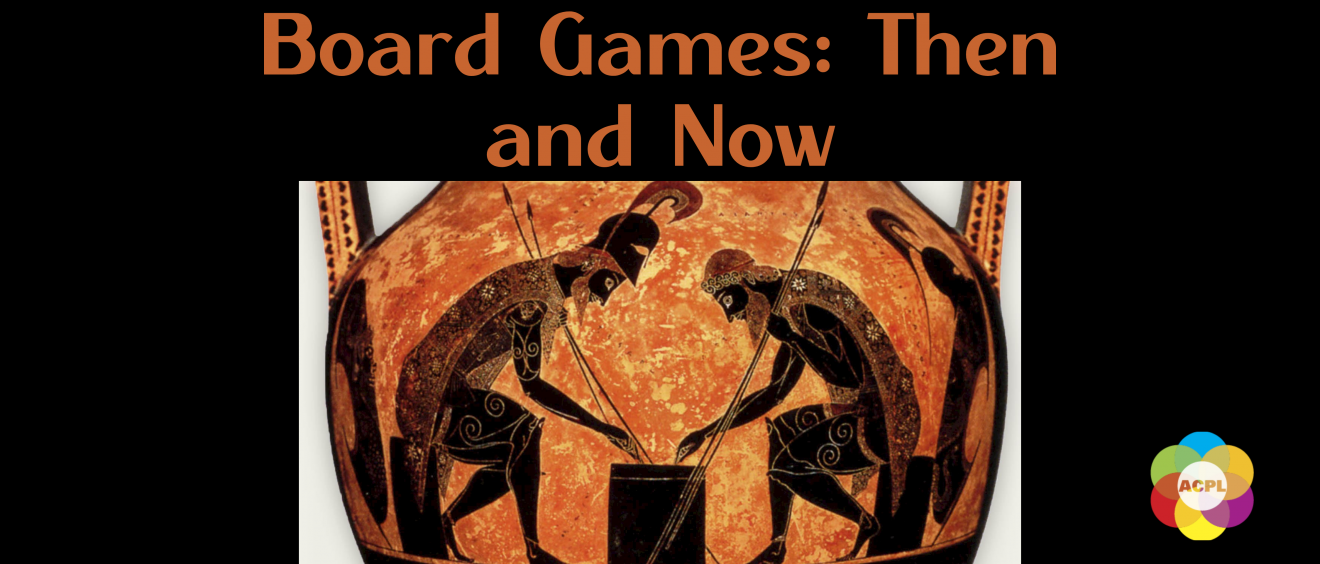
Board Games: Then and Now
Our circulating board game collection is back! This blog post will introduce the history of board games and give suggestions for new games based on some classics that you already enjoy. To check out a board game fill out this form.
By Tyler Brown
When you hear “board games” what comes to mind? Many people think of the games they enjoyed when they were younger like Monopoly, Clue, and Risk—some of my own favorite gaming memories are playing these games with my family and friends when I was younger. But board games have been around for about 7000 years and the games many think of as classics come from a long history—a history that is still being written.
Early Board games
As soon as humans began to have spare time from the pursuit of survival, we started creating games. The history of board games starts with a few holes in the ground and a handful of rocks. One such game, mancala, first appeared across Africa and Asia in around 5000 B.C. Not much has changed with mancala, you’ve probably even played a similar version to that of your prehistoric ancestors. However, simple games like mancala have been updated as modern board games. In Five Tribes by Italian board game designer Bruno Cathala instead of picking up seeds or stones, you are moving various tribes of Arabia throughout a desert, interacting with djinn, trading resources, and consulting elders.
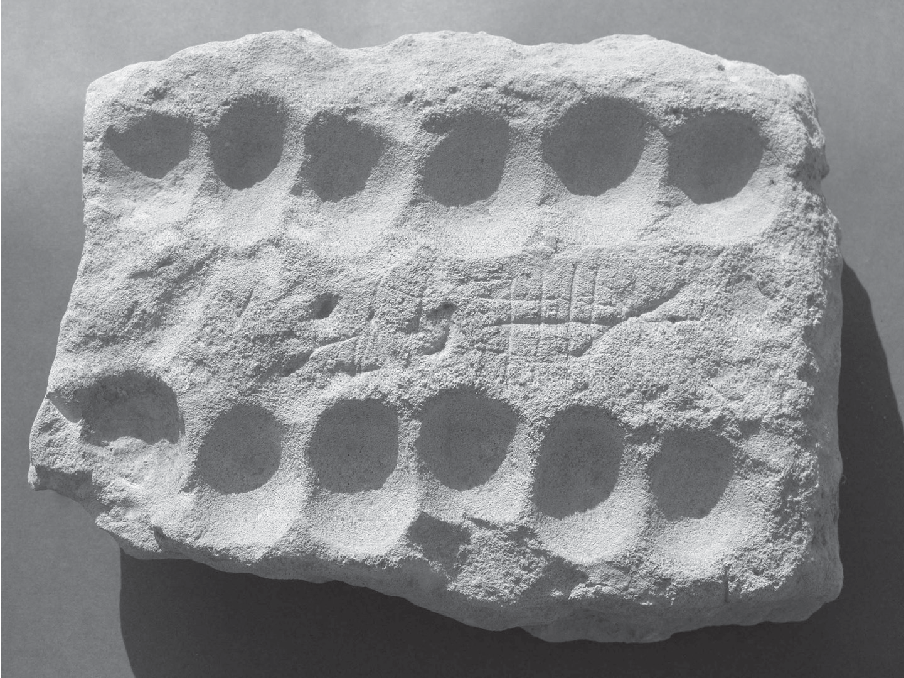
An ancient clay mancala tablet

A modern mancala set
Dice Through the Ages
Dice have also played an important role in games throughout human history. From pagans in the West Fjords of Iceland telling fortunes to modern-day friends sitting around a table with a handful of dice playing Dungeons and Dragons. From Roman Centurions hoping gods would give them an advantage on the battlefield to VA hospitals and therapists using role-playing games to treat PTSD. The evolution of throwing dice is varied and exciting.
One example of the long history of dice is the phrase “roll the bones”, referring to game dice. The “bones” in question actually refer back to real bones. Astragalomancy was a popular form of divination used throughout Europe, with many archeological findings dating back to 500 B.C. The name, astragalomancy, comes from the astragalus bone—a small ankle bone. This bone, generally from sheep or goats, was originally used to find answers to yes or no questions. As time went by more results were added, different materials were used, shapes changed, and now in modern times there exist hundreds of different dice.

Dice through the ages
20th Century
Post-WWII board games fell into two distinct camps: those published in the USA and those published in Europe, mainly Germany. The games released in the US were games focused on head-to-head competition. For example, Monopoly, originally called The Landlord’s Game, was designed in 1903 by Lizzie Magie to show the evils of capitalism. However, it was re-released by Parker Brothers—through some very questionable and apt legal battles in 1935—and focused on bankrupting your opponents. Monopoly is a zero-sum game, which means that everything you gain is essentially a loss for your opponents. As I am sure you’ve experienced, this creates a somewhat volatile play experience that generally ends with one player having enjoyed their evening and leaving everyone else a little bitter.
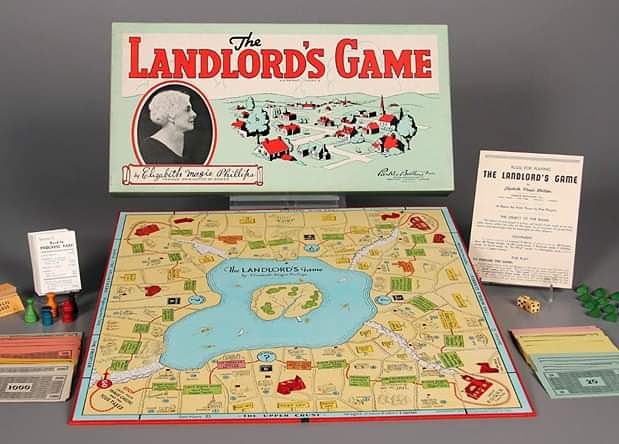
Many games released in the US follow this equation. Many other games released in the latter half of the 20th century such as Risk, Axis and Allies, and Battleship, etc. recreated war in such a way that didn’t quite resonate as well with Germany as they did in the US. This specific way of gaming led to a board game revolution of sorts.
The European Renaissance
The games coming from Germany in the late 20th century shifted away from direct conflict, destructive, zero-sum experiences, and toward creating nuanced approaches focused on metaphor, building, and community. These games generally became known as “Eurogames.”
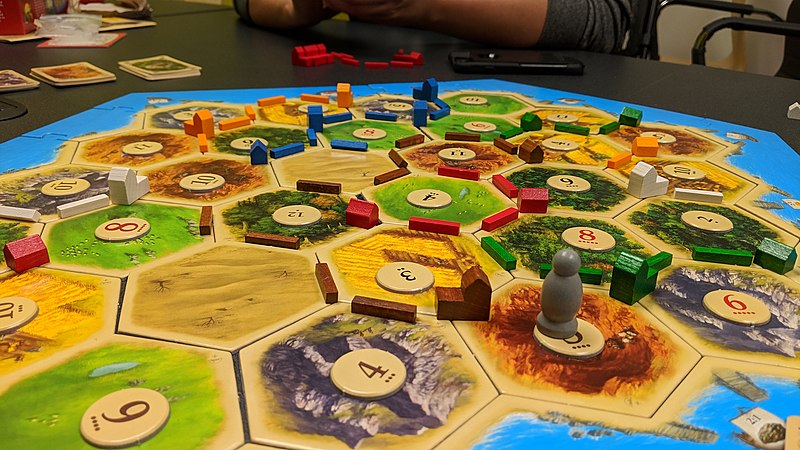
One of the most famous of these games is Settlers of Catan, designed by Klaus Teuber, in which players have arrived on an island and begin to settle it by trading resources, building roads, settlements, and cities. The game creates an experience where players are not at odds with one another, they each try to do their own personal best without direct conflict with everyone else at the table. This isn’t to say the game contains no conflict—finding yourself low on sheep and your friend refusing to trade is just as infuriating as anything experienced in Monopoly. The point of Settlers of Catan is that you do the best you can without explicitly harming another player’s ability to do well, and in the end, you don’t have tears—at least not usually.
Board Games Today
German board games stormed across the Atlantic Ocean and changed the way we play. Europe’s board game renaissance did more than just create a different way to play—it influenced the way games were being made in America. The space between the conflict-driven post-WWII games in the US and Eurogames was quickly filled by an amalgamation of the two. Modern board games have evolved from and directly responded to earlier games in different ways.
For example, Catan is far from a perfect game. One rough spot, in particular, is how problematic the theme of “settling” land can be. Colonialism isn’t a bright point in history. In 2017, after countless games like Catan—based on colonizing new lands—were designed, an anti-Catan type game was released named Spirit Island. In Spirit Island players work together cooperatively as elemental entities protecting the natives of their island from incoming settlers. Spirit Island is just one example among thousands and thousands of modern games, but it’s a prime example of the depth and consideration in modern board games.
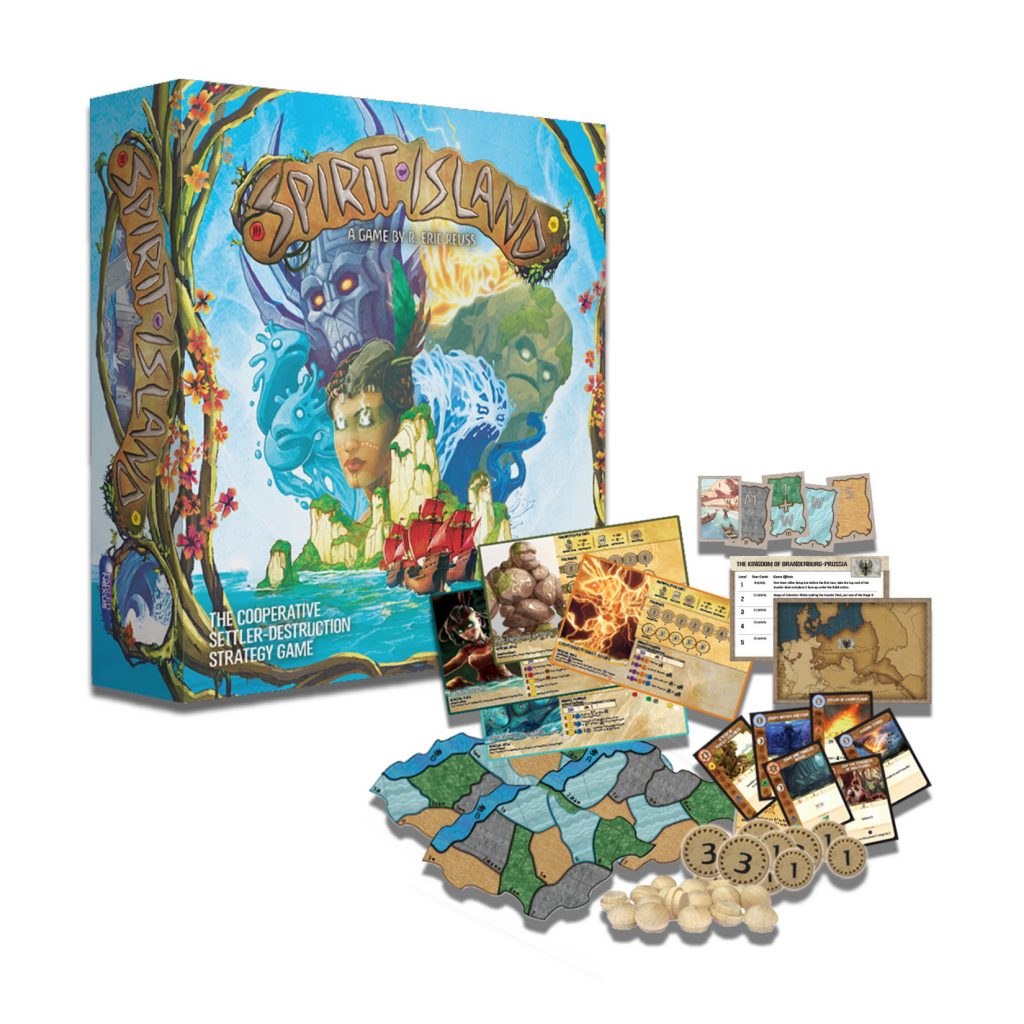
This is where we are today. Each year over 5,000 new games are released. Over the past 20 years, the board game industry has outpaced nearly every other industry—many even claim that its sudden rise was statistically greater than Google’s. Games are an intrinsic part of being alive in the world, they always have been. They allow us to learn, be imaginative, have fun, and heal.
“The ultimate lesson games give is not about gratification and reward, nor about media and technology, nor about art and design. It is a lesson about modesty, attention, and care. Play cultivates humility, for it requires us to treat things as they are rather than as we wish them to be. If we let it, play can be the secret to contentment. Not because it provides happiness or pleasure—although it certainly can—but because it helps us pursue a greater respect for the things, people, and situations around us.”
-Ian Bogost, Play Anything 2016
Board Game Suggestions
That’s just a quick history of where board games have been. Let’s take a look at some of the board games we have here and now at ACPL. Here are a few board game recommendations that the library has based on the “classics” you know.
Do you like Monopoly?
Try:
Settlers of Catan or Ticket to Ride
Both of these are pretty popular and well known in modern gaming circles. Both have plenty of situations that will allow your family to have some good old conflict, but they are simple enough to learn in 10 minutes, won’t last all night, and won’t end in tears.
Do you like Clue?
Try:
Cryptid
Clue is all about deduction, but Cryptid is Clue on Steroids. It’s quite a bit more advanced but easy to learn and quick to play, and who doesn’t like trying to find supernatural and creepy monsters?
Do you like Jenga?
Try:
Rhino Hero: Super Battle
Do you like the intensity of knocking down large structures? Well, let’s take it up a notch. In Rhino Hero: Super Battle you build the structure and climb as you act like the superheroes you are, but be careful of the evil monkeys.
Do you like Risk?
Try:
Inis
Tired of your friends hiding out in Australia and then crushing you after 6 hours? Take on the role as a Celtic chieftain and discover multiple ways to victory. It won’t take you longer than a couple hours and will scratch all the same itches as Risk, with the added bonus of strategy and incredible interactions you won’t forget.
Do you like Yahtzee?
Try:
That’s Pretty Clever
You like rolling bones and fighting against yourself to make the best decisions? This German dice game is incredible and takes little effort to learn. I promise you’ll forget that Yahtzee exists once you’ve played this.
